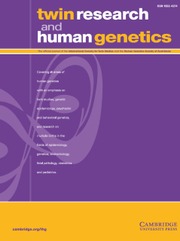No CrossRef data available.
Article contents
Review of Beyond the Bond: Insights Into Navigating the Challenges of Being or Raising a Twin, by Joan A. Friedman
Review products
Review of Beyond the Bond: Insights Into Navigating the Challenges of Being or Raising a Twin, by Joan A. Friedman
Published online by Cambridge University Press: 01 August 2025
Abstract
An abstract is not available for this content so a preview has been provided. Please use the Get access link above for information on how to access this content.
Information
- Type
- Book Review
- Information
- Copyright
- © The Author(s), 2025. Published by Cambridge University Press on behalf of International Society for Twin Studies


